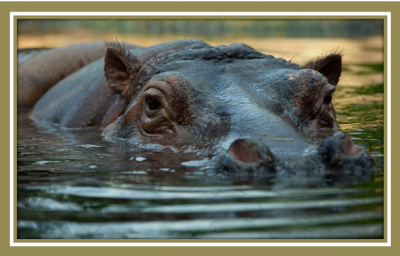News
Latest Lion Aid News
Spare a thought for hippos
Friday 26th September 2014
|
Best lie low
Hippos have decreased hugely in Africa – they are a popular bushmeat item and cause much conflict with humans as they destroy crops. Consequently, it is difficult to find many hippos in large stretches of African rivers and lakes where they used to occur in numbers. You would be very hard pressed to find a hippo on the three largest lakes in Africa – Victoria, Tanganyika, and Nyassa (Malawi). I did biodiversity research on all those lakes in the 1990s and travelled huge expanses of the lake by boat but hardly saw a hippo. Hippos are also unfortunate that their teeth are increasingly used in the legal and illegal ivory trade (ivory is not just about elephants!). And the trade in hippo ivory is perfectly legal, although there is also a significant illegal trade of poached animals. How much legal hippo ivory enters the market? Over the ten years 2003-2012 exports from African countries indicate that 93,445 kg of hippo ivory and 35,763 teeth (mostly the large canines of which hippos have four) were exported. As a conservative estimate, I would say this represents about 27,000 hippos. These hippos came largely from the usual suspects like Zambia, Zimbabwe, South Africa and Tanzania – but significant numbers were also exported from Malawi, Uganda and Mozambique. By far most of this ivory ends up in Hong Kong. There is also a major skin trade involving hippos. From 2003 to 2012, African nations like Zambia, Zimbabwe and South Africa, among others, exported 13,996 skins, 46,305 square feet of skins, and 7,367 square meters of skins. Are all those skins from the hippos killed for their ivory? In addition, hippos also seem a popular trophy for trophy hunters. In the 20 years 1993-2012, a total of 11,444 hunting trophies were exported, mostly from Tanzania, South Africa, Zambia and Zimbabwe. Of that total, 30% came from Tanzania, a seemingly popular destination for hippo trophy hunters. Hippos are not particularly difficult to hunt – with a powerful rifle and an accurate telescopic sight, all you need to do is sit by water and wait for them to emerge. The only difficulty posed is that if you only wound a hippo they will run back into the water and die there. Difficult to then recover your trophy, and perhaps necessitating shooting another one. How many hippos remain in Africa? Good question as nobody really knows. Anyone ever heard of a hippo survey? One that was conducted in the DRC in 2003 showed that the Virunga population had been decimated from 29,000 thirty years ago to 1,300. One wonders, over ten years on, how many of those remain. Current estimates vary, but a conservative estimate would indicate that not more than 70-90,000 hippos remain on the entire continent. The IUCN classifies hippos as valuable and CITES lists them on Appendix II – without much knowledge of their current populations and rates of decline. In addition, western African hippos deserve their own taxonomic status. The high level of hippo ivory involved in trade, trophy hunting offtake, habitat loss, human conflict and bushmeat offtake all add up to a sad future for hippos – and I would argue in favour of adding Hippopotamus amphibius to be added to our list of gravely threatened animals. Picture credit: http://bit.ly/1myASyO Tags: trophy hunting, south africa, CITES, Tanzania, ivory, Zimbabwe, IUCN, Zambia, Hippos, Virunga Categories: Events/Fundraising, Traditional Medicine, Trophy Hunting, Domesticating Animals |
Posted by Chris Macsween at 18:49
No comments have been posted yet.
Add a new comment
Existing user
New user sign up




